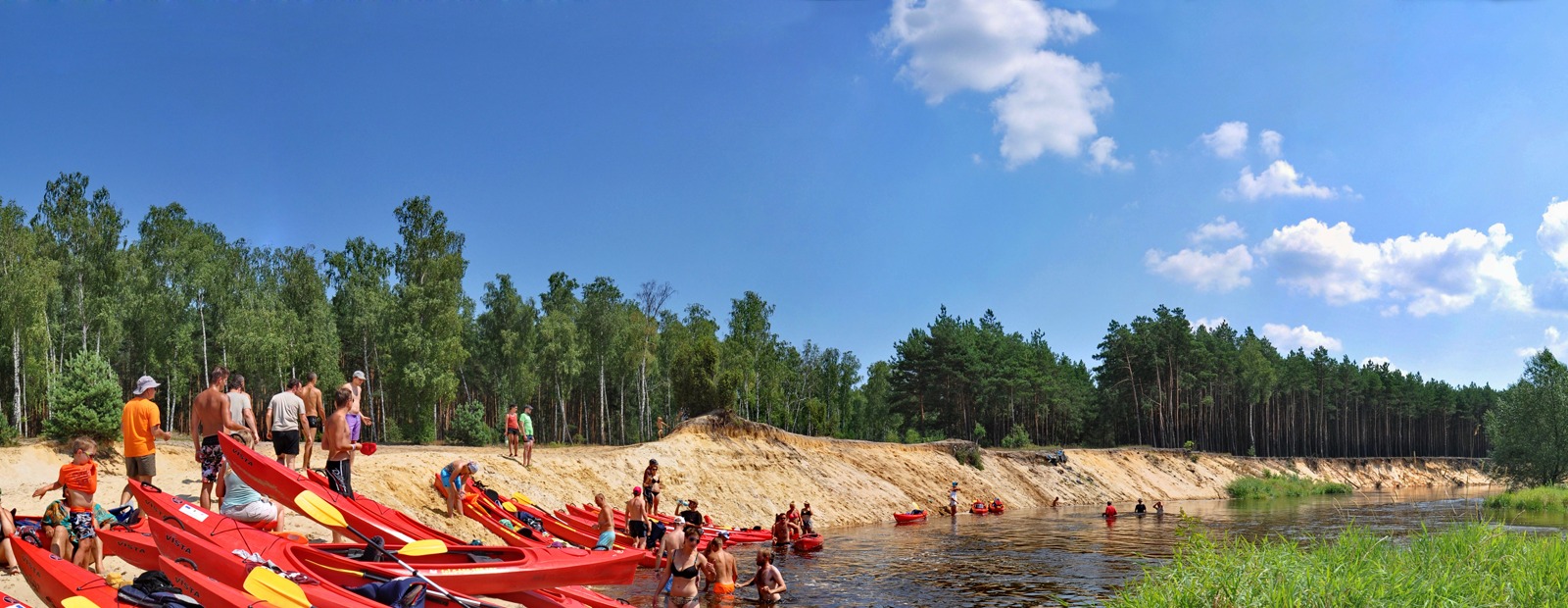
BLOG
A capsized kayak is not that terrible

If you capsize in a mountain kayak, the only thing you can do is an Eskimo roll, i.e. you roll with the kayak or cabin, i.e. you unfasten the spray deck and leave the cockpit. Both these things look easy only on TV. In the case of wide tourist kayaks with large cockpits in which you generally don’t use spray decks, it is much simpler. You fall into the water gracefully and often don’t even plunge your head.
The first thing you do after capsizing is to check whether somebody needs help. This particularly concerns children who – I repeat that ad nauseam – travel in fastened vests. Next, you tow the kayak to the bank, holding the bow or stern, and you do it calmly, without panic, since nothing terrible has happened. You don’t climb up the middle part of the kayak and – note – you don’t roll the kayak in the middle of the river. A capsized kayak has a lot of air inside and that allows you to pull it easily towards the shallows, where you roll it and dry by yourself or with the help of another crew. If you roll the kayak in the middle of the river, there’s a risk that it will take on water or even go down.
A capsize often happens when the kayak is in a perpendicular position to the river’s current and is stopped by an obstacle. You should avoid such situations because the current that is pushing against the kayak’s side can easily turn over your boat. Beginner kayakers automatically lean “away from the obstacle”, which is a mistake that leads to the tilting of the kayak towards the current. The flowing water floods into the cockpit after a while and turns the kayak over. Generally, the best methods for getting out of trouble are: calmness, leaning towards the obstacle, and sometimes even “doing nothing” for a moment. A capsize may also happen when you go onto, e.g., a root and the boat goes up. Some people get their trousers wet even when getting into or out of the kayak… (Read other articles about how to get into a kayak, about paddling techniques and how to avoid obstacles.)
The author of this article capsized for the first time on a lowland river some ten years after he started kayaking. Conclusion: you must always take into account an unexpected bath. Sometimes the routine leads to disaster, sometimes a wave makes reading the water impossible, you can never be sure how the person with whom you’re paddling will react. A capsize on a summer kayak trip really isn’t a terrible thing. If the water is warm, the sun is shining, our belongings are properly secured and we’re paddling wearing vests, we give dangerous spots such as artificial dams a wide berth.
When packing a kayak, you always have to take into account that the kayak may capsize. So protect valuable things against water and put them into a bigger bag. If you don’t need them while paddling, it is best to leave them in a safe place on land. Small heavy items such as car keys, loose in the kayak, will fall into the water if the kayak capsizes and you most likely won’t be able to find them at all.
A capsize is a source of endless jokes during the first campfire. Talking of the campfire, it’s the done thing that those who have capsized don’t come empty-handed there…
